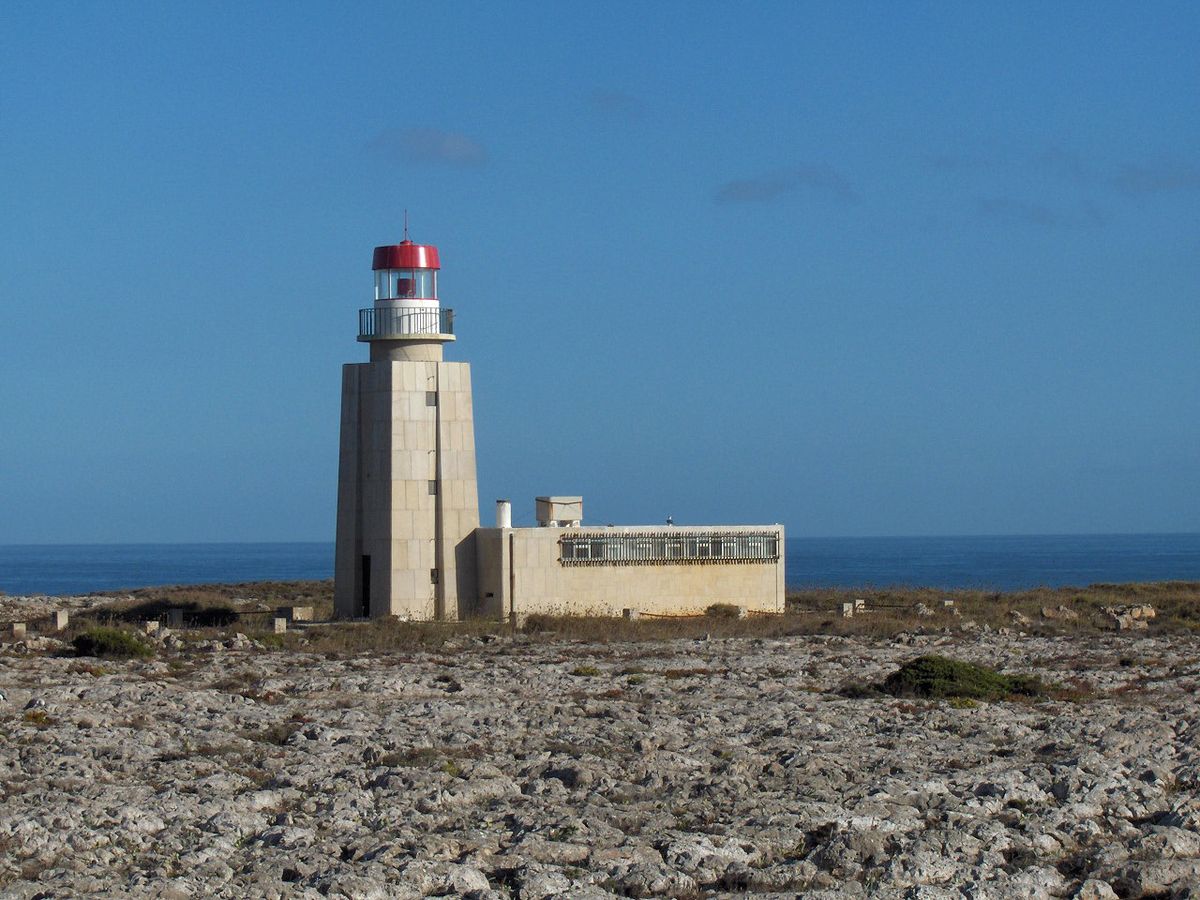Versão portuguesa aqui.
GPS 36.99521172059877, -8.949215684656231
The Lighthouse of Sagres, located inside the Fortress, was inaugurated on March 4, 1894 to mark the 500th anniversary of the birth of Infante D. Henrique. It is a white square tower with a white lantern and a red dome. It has a range of 11 miles.

The Lighthouse of Sagres is located at Ponta de Sagres, inside the Fortress, and was inaugurated on March 4, 1894 to mark the 500th anniversary of the birth of Infante D. Henrique.
As the original lighthouse was much weaker than the neighboring Lighthouse of S. Vicente, which is located at just over 5000 meters, and with a much smaller range, it soon had several complaints because it should have clearly marked Ponta and Sagres, the southernmost tip of the headland. In the beginning, lighting was achieved by an oil lamp, with a fixed red light, and with a range of only 5 nautical miles (9200 meters).

12 years later, in November 1906, it was replaced by another one with greater range, already reaching 12 nautical miles (22,200 meters). The new lighthouse, this being the second tower, came into operation in June 1923.
In April 1960, a third tower came into operation, whose lighthouse was automated and electrified in August 1983, therefore no longer needing a lighthouse keeper present, as it was now controlled at Farol de S. Vicente.
It is a white square tower with a white lantern and a red dome. It has a range of 11 nautical miles, with a 500 W bulb.
History
Construction of a tower began in 1515 in the convent of S. Vicente, where a light was lit, probably an occasional bonfire, maintained by the religious who lived there, to serve as a guide for navigators, highlighting the importance of this place. .
In 1587, the corsair Francis Drake took the convent by storm, eventually destroying the tower that would only be restored in 1606 by King Filipe II, with the lights going out during this period.
After undergoing several reconstruction attempts that were never definitively concluded, the lighthouse of S. Vicente, as we know it today, was built by order of D. Maria II, in 1846.
The illuminating apparatus consisted of sixteen Argand lamps with parabolic reflectors, running on oil. The rotation of the apparatus was done through a clockwork mechanism.

For many years the lighthouse of S. Vicente was abandoned, finding itself in a deplorable state, according to the chronicles in 1865.
In 1908 the tower was raised by 5.70 meters. The catoptric device was removed and a hyper-radiant optic (1330 mm focal length) was mounted in its place. It is currently the largest existing in Portuguese lighthouses and one of the few existing in the world. The light source became a constant level lamp with 5 twists, and a few years later it started to use incandescence by oil vapour. The rotation of the optics was achieved through the clockwork machine.

Up to the present day, the lighthouse of S. Vicente continued to be modernised: in 1914 a fog signal was installed; in 1926 the lighthouse was electrified with the assembly of generating sets; in 1947 it was equipped with air-maritime panels and a year later it was connected to the public electricity grid; in 1949 a radio lighthouse was installed, which was deactivated in 2001 as it was no longer of any interest for navigation.
In 1982, it was equipped with several automatisms, starting to remotely control the operation of the Sagres lighthouse. In its facilities there is a Museum Pole.
Characteristics:
LATITUDE: 37º 01', 45 N
LONGITUDE: 08º 59', 71 W
HEIGHT: 28 m
ALTITUDE: 86 m
RANGE: 32 MI (59 Km)
FEATURE: FI W 5s (Lt 0.1s;Ec 4.9s)